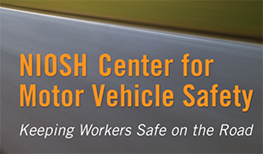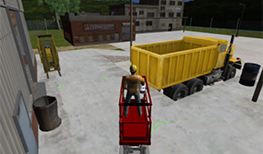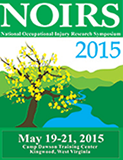TRAUMATIC OCCUPATIONAL INJURIES
Work-related injuries have a human and economic impact for employers, workers, and communities.
The Traumatic Injury Prevention Program aims to reduce and prevent work-related injury and death from trauma across all industries. Our priority topics include preventing injuries and deaths related to:
- On-the-job motor vehicle crashes
- Falls at work
- Workplace violence
- Use of machines and industrial vehicles to perform work duties
Explore the topics below to learn more about our work.

Topics

NIOSH Ladder Safety App
This award-winning app uses visual and audio signals for workers to position extension ladders at an optimal angle to reduce falls. It also includes step ladder guidance. Get the free app!

Behind the Wheel at Work
Subscribe to this quarterly eNewsletter for the latest news from the NIOSH Center for Motor Vehicle Safety, including research updates and practical tips on workplace driving.

Online Course for Nurses
This award-winning course educates nurses on the scope and nature of violence and how to prevent it in the workplace. Take the course to earn your free continuing education units!

Aerial Lift Simulation
Access NIOSH’s Hazard Recognition Simulator, which helps potential operators acclimate to aerial lift operation and identify common hazards that can be present during use.
Fatality Investigation Reports
![]() Fatality Assessment and Control Evaluation (FACE) Reports
Fatality Assessment and Control Evaluation (FACE) Reports
Access NIOSH and State FACE investigation reports of fatal work-related injuries.
Fire Fighter Fatality Investigation and Prevention Reports
Search Independent investigation reports of fire fighter line-of-duty deaths.
National Occupational Injury Symposium (NOIRS)

NOIRS is the only national forum focused on the presentation of occupational injury research findings, data, and methods.
NOIRS 2015 was held May 19-21, 2015 at the Camp Dawson Training Center in Kingwood, West Virginia. Publications from research presented at NOIRS 2015 are available in a special issue of the Journal of Safety Research, free through July 2017.
- Page last reviewed: June 14, 2017
- Page last updated: June 14, 2017
- Content source:
- National Institute for Occupational Safety and Health Division of Safety Research


 ShareCompartir
ShareCompartir